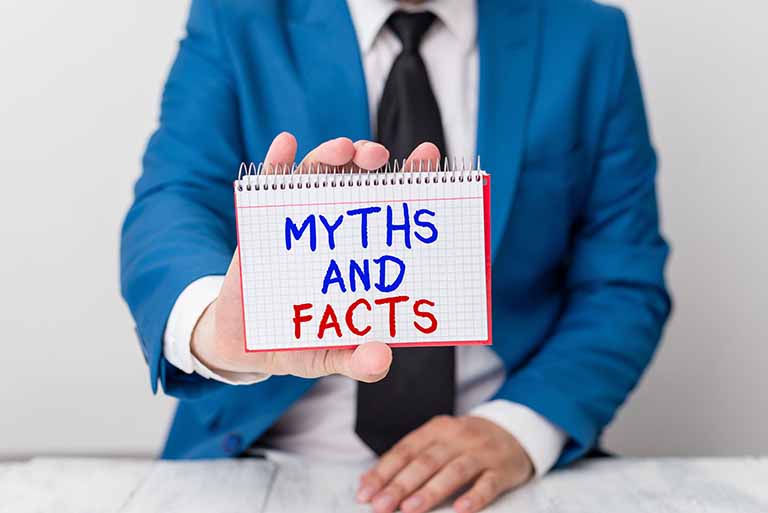Common Misconceptions About Disability Insurance:
Your most important asset isn’t your house or your car, yet most people think paying to insure those items is essential.
So… what is your most important asset?
Get your quote in less than a minute!!
It’s your income. It’s your ability to make a living. It’s your ability to pay for things like your house and your car. Why wouldn’t you want to protect it? That’s what disability insurance is. It’s income protection insurance. It makes sure you still receive a portion of your income, so you can continue to pay your mortgage and take care of your family if you were unable to work for a period of time because of a qualifying disability.
There are many misconceptions about disability insurance, and its name doesn’t offer a great explanation either. That’s why in England and Australia, it is actually called “income insurance.” For many workers, the security of income protection insurance could be the difference between maintaining their lifestyle or diving into financial hardship.
Most Americans are not prepared to have their income taken away for an indefinite amount of time. Countrywide Financial, the largest mortgage company in the country, previously said “curtailment of income” was the primary reason for foreclosures in the United States.1 You can buy all of the car and home insurance you want. But if you can’t afford to pay for your car or your home, then it will all go to waste.
“I’ll never become disabled.”
In the words of Justin Bieber, “Never say never.”2 Becoming disabled is something many Americans, especially younger ones, think will never happen to them. Many severe medical conditions, such as cancer or mental illness, can affect the young and the elderly. The reality is that in the United States, 1 in 4 adults have a disability.3
That means you have a 25% chance of becoming disabled at some point during your lifetime. Do you have a plan if you cannot work for six months? What if you were unable to work for an entire year?
“Severe disabilities don’t run in my family.”
The need for disability insurance has nothing to do with a genetic predisposition. Your grandparents could live until they were 115 years old, but that wouldn’t have any bearing on the chance of you becoming disabled. Severe disabilities could come from an injury that leaves you unable to work until you fully recover.
Disability insurance benefits come into play when a qualifying event happens that limits your ability to work. This insurance covers critical illnesses, including heart attack, stroke, cancer, organ failure, cognitive impairment, and serious injuries that lead to an inability to work.
“Disability insurance cost is too high.”
If you think the disability insurance cost is too high – try getting a disability without having disability insurance. Now that is expensive.
Typically, disability insurance cost is only one to four percent of your income. The premium for long term disability insurance is generally based on your desired coverage and your annual salary, along with other life factors. The factors considered when calculating your insurance premium include:
- Your salary
- Your occupation
- Your age
- Your gender
- Your health history
- Your location
- Your benefit amount
- Your benefit period
When choosing your long term disability insurance plan, you should also consider planning for future expenses, such as retirement or children’s education expenses.
Disability insurance is essential because the entire idea of unplanned injuries and illnesses is just that — unplanned and unexpected.
“I’m young and healthy. I don’t need long term disability insurance.”
Actually – the best time to get disability insurance is when you are still young and healthy. BEFORE your health begins to deteriorate and before you have a pre-existing condition. Before you become riskier to insure and your premium gets higher. (If you are someone who thinks disability insurance cost is too high – then you definitely want to get it when you are young and healthy.) Disability insurance provides a ton of benefits, and the best way to maximize your return is to get it as early as possible.
Of course, getting disability insurance in high school is probably a little too early. But as soon as you start earning an income, you should make sure it is protected.
Think about it this way: there are so many different types of disabilities that could pop up at any time during your life. Injuries happen. Accidents happen. Some of those have nothing to do with age or health. And if you have 10, 20, or 30 years’ worth of working years ahead of you, that means you’re risking 10, 20, or 30 years of lost income if something were to happen and you were unable to work.
“I only need health insurance.”
Health insurance definitely helps cover medical care costs for different types of disabilities, but it does NOTHING to protect the income you lose from being unable to work.
As a freelancer, small business owner, or independent contractor, your income depends on your ability to work. Every single day you can’t work is money you miss out on. Even if you are a full-time employee and have paid time off or sick leave, you are going to run out at some point. So, what do you do after you run out of paid time off, but you still need to stay home for six more months to recover from a stroke?
Disability insurance can help fill this gap and bring you a better sense of security in the case of any unexpected circumstance. And most importantly, income protection insurance means you can focus on getting better without worrying about how you are going to pay your mortgage. And one of the most significant differences between long term disability insurance and other health insurance plans is that disability benefits are paid directly to you.
“I can purchase disability insurance when I need it.”
You can purchase disability insurance whenever you want, but the longer you wait, the less it will help or the more it might cost. That’s why everyone is encouraged to get income protection insurance while they are young and healthy.
Did you know that disability insurance is underwritten based on your perceived risk? Suppose you already begin to suffer from a severe disability and try to get long term disability insurance. In that case, chances are your policy will cost a lot more, if you are even approved at all. And if you are approved, it’s also common for policies to contain exclusions, such as pre-existing conditions.
“I have savings. I don’t need income protection insurance.”
Severe disabilities can be so unpredictable, and there are so many different types of disabilities that you can’t possibly know how much money you need to save.
Many long-term disability insurance claims are for chronic problems such as cancer and musculoskeletal conditions. According to the Council for Disability Awareness, the average duration of a claim is nearly three years — 34.6 months.4 Can you confidently say you have enough savings to live off of if you cannot work for three years?
If the answer is no, you are not alone. When the Federal Reserve Board surveyed adults about household economics, 53% said they don’t have a rainy day fund that could cover them even for three months. More troubling, nearly half of respondents — 46 percent — said that faced with a hypothetical $400 emergency expense, they don’t have the cash to cover it.5
“Social security disability insurance will cover me.”
If you agree with this statement, you are seriously mistaken. But again, you are not alone. In fact, at least 51 million working adults in the United States are without disability insurance other than the basic coverage available through Social Security.6
Ever hear of the saying, don’t count your chickens before they hatch? Well, don’t count on social security disability insurance until you have been approved. The Social Security Act defines severe disabilities very strictly. According to the Social Security Administration (SSA), the disability approval rating at the application stage is roughly 36%. That means 6 out of every 10 applications for disability benefits will be denied.7
Furthermore, social security disability insurance doesn’t cover all disabilities, and when it does cover a disability, the disabled individual often receives only a small fraction of pre-disability income.8 Long term disability insurance is designed to cover up to about 60% of your paycheck or income.
“I don’t need disability insurance – I work from home.”
Many people who work from home have a false sense of security and think they are better insulated from disabling events. But the truth is, where you work has no impact on the need to protect your income.
You can still have a heart attack at home. You can still get cancer if you work at home. Driving in a car or commuting to work is not the only way someone might become disabled. Remember, disability insurance covers critical illnesses, including heart attack, stroke, cancer, organ failure, cognitive impairment, and serious injuries that lead to an inability to work.
You need income protection insurance
If you’re an independent worker or run your own business, disability insurance is likely super important to your work-life world. Even if you are a full-time employee with paid time off and sick leave, chances are it might not cover the amount of time you can’t work because of a severe disability.
There are many different types of disabilities that might impact your ability to work. If that does happen, long term disability insurance could be the difference between maintain your lifestyle or even having your house foreclosed on. It can be hard to imagine getting an illness or injury that could keep you out of work for some time. Disability insurance cost is typically only one to four percent of your income, which is a lot less than losing out on 100% of your income if you can’t work at all.
Get a fast, commitment-free quote in seconds!
Sources:
- What’s the No. 1 reason for foreclosure? | HowStuffWorks
- https://genius.com/Justin-bieber-never-say-never-lyrics
- Centers for Disease Control and Prevention
- The chances of becoming disabled are rapidly increasing; disability statistic (disabilitycanhappen.org)
- Report on the Economic Well-Being of U.S. Households in 2015, May 2016 (federalreserve.gov)
- Disability Statistics; Chance of Becoming Disabled – DisabilityCanHappen.org
- Signs That You Will Be Approved for Disability | SSD Eligibility (thegoodlawgroup.com)
- Five Common Misconceptions About Disability Insurance | Sensible Financial Planning


